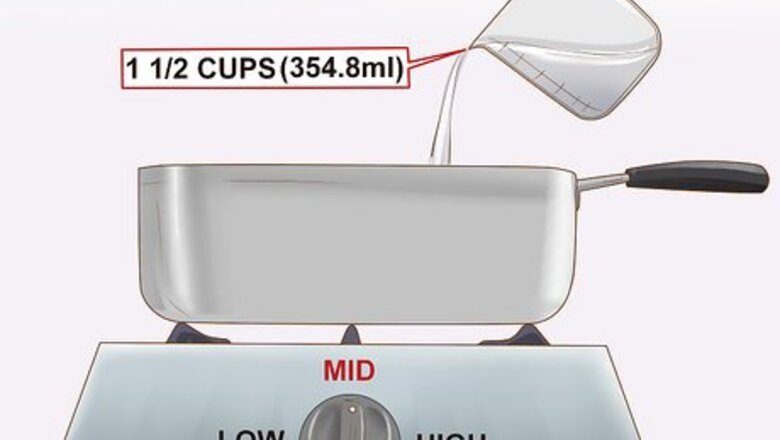
views
Making Warm Water Wax

Heat water in a double broiler. Pour in about 1 ½ cups (354.8 ml) of water in the bottom of a double broiler. Heat on medium heat until the water is hot and steaming. You do not need to boil the water, you just need it to be hot enough to melt the beeswax through steaming. If you don't have a double broiler, you can also simply heat water in a pot on the stove, then put an equal-sized pot on top of it to create the effect of a double broiler.
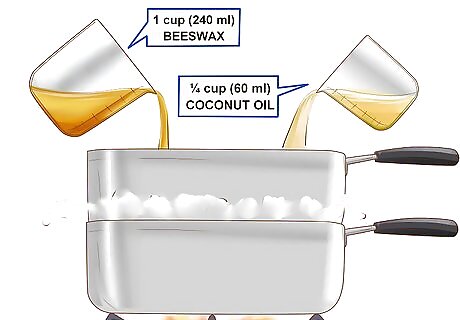
Place the beeswax and coconut oil in the top of the double broiler. Once the water has heated and is steaming, place 1 cup (240 ml) of beeswax and ¼ cup (60 ml) of coconut oil in the top pan of the double broiler. Place the top of the double broiler on top of the bottom pan.
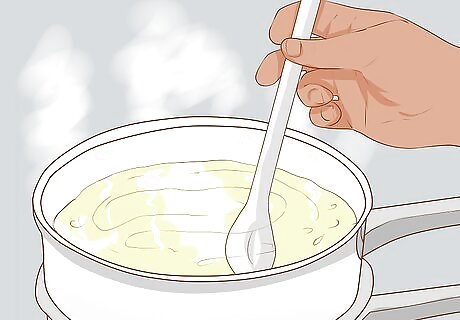
Melt the ingredients, stirring constantly. Once you place the beeswax and coconut oil over the bottom of the broiler, they should begin to melt. As they melt, stir the ingredients constantly so that they don't get stuck to the sides of the pan.

Add in essential oils. If you want your wax to be fragrant, add a few drops of essential oils when the wax and coconut oil have melted and mixed together. Popular oils to use are lavender, peppermint, lemon or rosemary. If you prefer the subtle scent of the coconut oil, don't add any essential oil.
Making Cold Water Wax
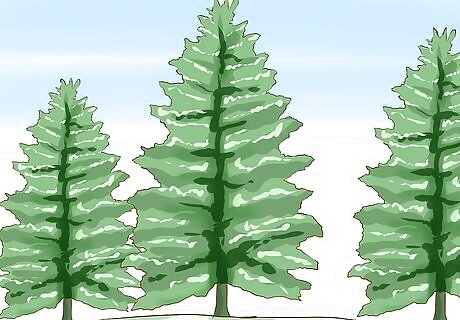
Find a healthy conifer. Cold-water wax differs from warm-water wax because it requires the addition of tree resin. To extract tree resin, first find a conifer tree that generally looks healthy, with relatively smooth, tight bark and without many dead branches or limbs. Conifer trees are trees that grow conifers, the cone-like growths that grow on tree branches. Examples of conifers are pine, spruce, maple, and cedar trees. If you don't want to extract tree resin yourself, you can find it on eBay or other online sites.
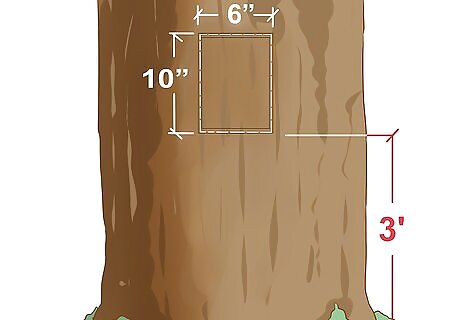
Create a flat, cleared area on the face of the tree. Once you have found a suitable tree, use a machete or a hatchet to cut downward on the bark about 3 feet from the ground. Make a rectangle that is about 10 inches long and 6 inches wide. Try to cut cleanly so that you cut out a flat area about 1 inch deep into the tree.

Place a bucket under the tree. Place a bucket against the tree directly underneath where you made the rectangular indent. Use a flat piece of metal or another smooth material to make a ramp that leads from the cleared rectangle into the bucket. The ramp will catch the resin as it comes out of the tree and lead it into the bucket. Therefore, it's important that the ramp is flush against the tree and leads directly into the bucket.
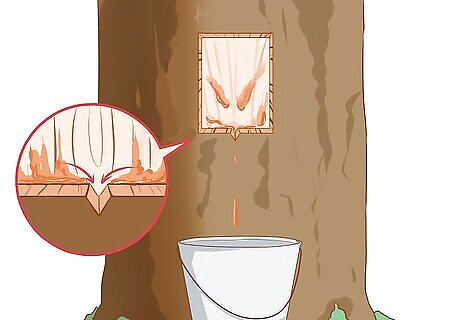
Cut V-shaped notches into the cleared rectangle. After you set up the bucket, use the hatchet or machete to hack into the cleared rectangle you made, forming V-shaped notches that are about half an inch from each other. It may be easier to do one side of the “V” at a time, hacking downward slashes on the left half of the rectangle and then hacking upward slashes on the other side of the rectangle.

Check the bucket every day. Collecting tree resin isn't instantaneous. You may have to wait several days for enough resin to collect. Keep the bucket under the tree and check on it daily. When it looks like you have about ¼ cup of resin, remove the bucket from the tree and transfer the resin to a small bowl. It should take two to three days to collect ¼ cup (60 ml) of resin.
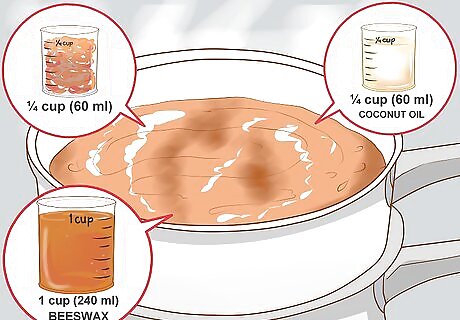
Use a double broiler to melt ingredients and form the wax. Use the same steps used to make cold-water wax, adding in the additional ingredient of ¼ cup (60 ml) of tree resin along with the beeswax and coconut oil in the top of the double broiler. The resulting wax will have a slightly stickier consistency than warm-water wax.
Putting the Wax in Containers
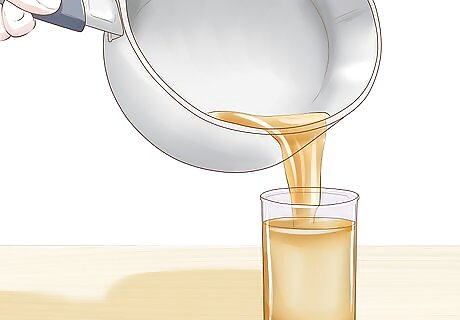
Pour the wax into a tin or container. Once the ingredients of the warm or cold water wax have fully mixed together, pour the wax into a container or tin large enough to fit it. Scrape the sides of the pan to be sure to get out all the wax. Use a tin or container that has a top so that the wax won't dry out.

Let the surf wax harden. Before you close the container of surf wax, leave the wax out to harden for three to four hours or overnight. Leaving the container open lets the heat escape so that the wax can harden faster, and so its consistency stays the same.

Use the wax or close and store the container. After the wax has hardened, it is ready for use. When you are done using the wax, place the lid on the container and store it in a cool place out of direct sunlight.














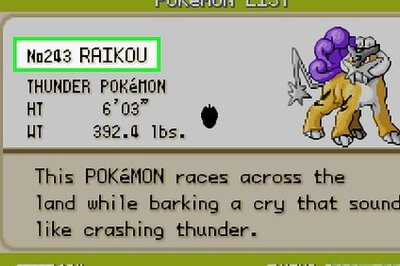
Comments
0 comment